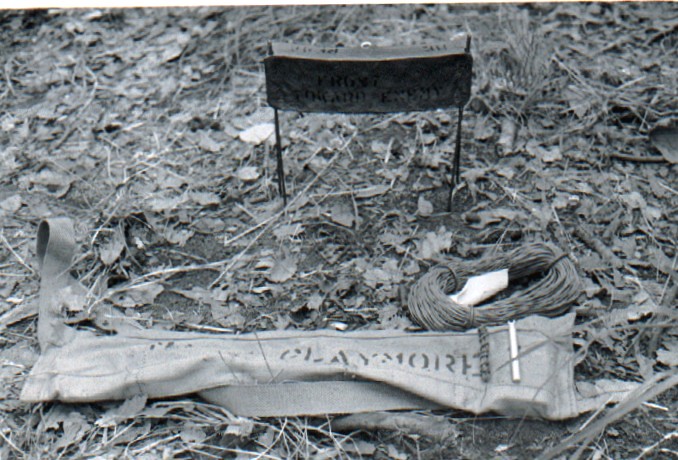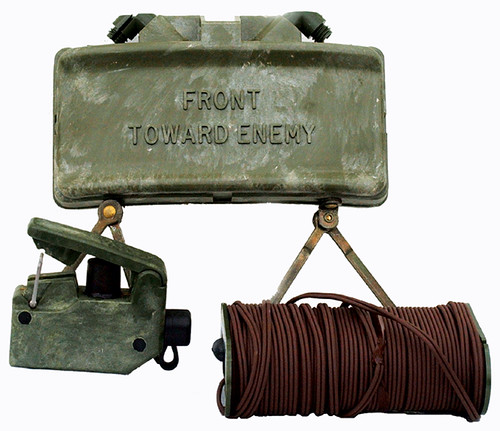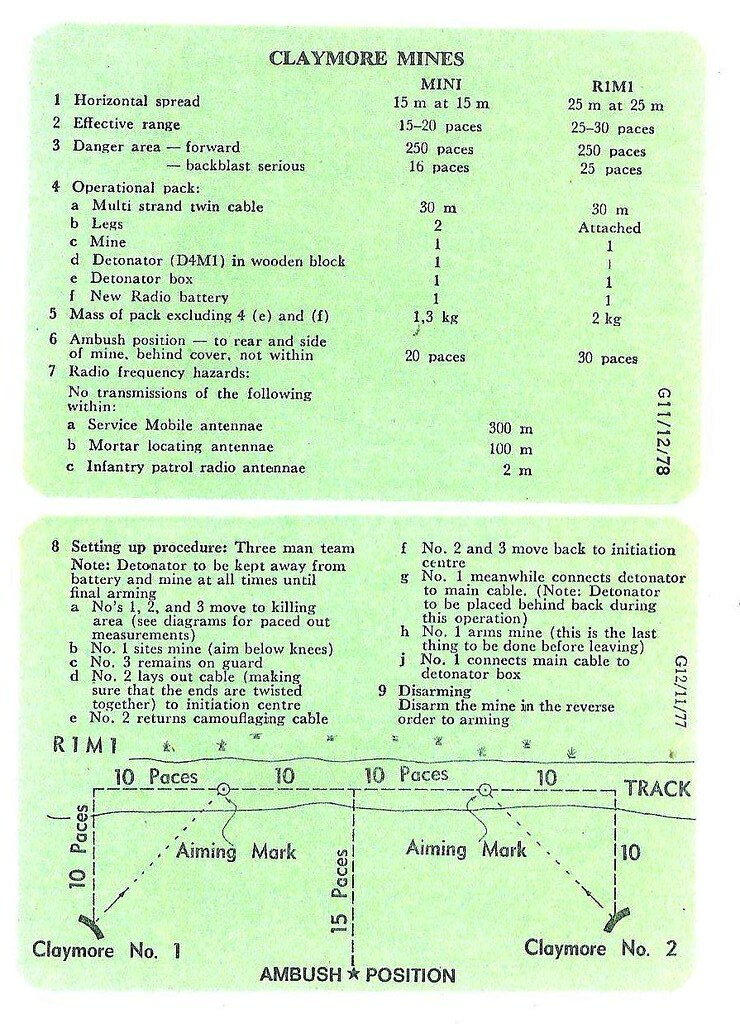Mommy's lil darling...
I wrote in another thread in 2010:
It did not take me long to figure out that the means of springing an ambush by tapping the LMG gunner on the shoulder then relying on the accuracy of a bunch of riflemen to make the kills was a pretty bad option.
Rhodesia had it own home-made claymores the mini and the maxi which we used to a lesser extent until the South Africans coped the US M18A1 (or equivalent of the early 70s) and the R1M1 became available to Rhodesian forces.
I was sent along to the introduction demonstrations which was mainly attended by the SAS. The SAS at the time were mainly doing daylight ambushes in Mozambique so were quite happy to position and aim the claymores perpendicular to the path/track and position the ambush party 50 metres from the path. The RLI and all other forces when ambushing did so internally and at night and with 4 man groups/sticks/call-signs.
At night even with an African full moon there was no chance of seeing anything from 50m off the path (we had no night vision equipment). So I adapted the "recommended" siting of the mines as per the image below (which became official policy in the army).
The mini-claymore was a home made Rhodesian weapon. Smaller and lighter was carried on a scale of one per rifleman when on patrols to allow a 4-man stick to protect itself at night when in an LUP (lying-up-place)A few notes:
1. By positioning the claymores at 45 degrees from the path the ambush group can get closer to the path to see and then finish off what may survive.
2. Use of paces rather than metres is practical for field work.
3. With a 4 man stick the commander faces forward and has the clacker/initiator, one rifleman faces backwards, the other rifleman and the LMG gunner face down the two directions of the path (beyond the killing ground) with the LMG on the most likely approach side to engage those not caught in the killing ground and discourage any thought of their interfering or any heroics. (Even with two claymores we used Cordex initiated by one clacker.)
4. Additional claymores could be daisy chained outwards with the use of Cordtex (det cord) to include more of the insurgents in the fun.
5. The detail above makes no mention of the clacker (as initiator) as a number of the other units were using the older stuff (minis and maxis) which did not come with a clacker.
6. I set a demonstration using 50 paces of hessian cloth (burlap) at 6 foot high stretched taught between wooden posts. Then fired the claymores as per the detail above one at a time. After firing the first one troopies marked each of the 700 pellet strikes on the hessian with one colour of blackboard chalk. Then I got them to fire the second one and marked the strikes with a different colour chalk. I then positioned a troopie in the killing ground and had two others position at the two claymore detonation points. In this manner we were able to figure out how many strikes an insurgent would receive from either or or both claymores. No survivors in the 40 pace killing ground using two claymores.
7. The siting of the ambush must take into account ground levels, vegetation and rocks and things which may shield areas of the killing ground from hits and in addition and importantly obstacles which would interfere with the explosive gass flow and thus upset the predictable pellet spread.
8. At the initial demonstration we saw the effect of the 3.2mm (1/8 inch) steel ball on ballistic clay and the holes made were equivalent to the cavitation effect on soft tissue. Awesome.
9. For a time I was flown out to all ambushes sprung using a claymore to asses the effect. Again Awesome. (In one case where a less than perfect siting of the mine had happened the lead scout got one pellet in the back. First we found his weapon, a few steps later the sling bad he was carrying then his jacket (he pulled off on the run) with one hole with a little blood then him with a bloodied shirt. Must have made 30 metres before he ran out of luck.)
10. In this way and in a millisecond every living thing in the killing ground pays the ultimate sacrifice. This is the way to wage war.










Bookmarks